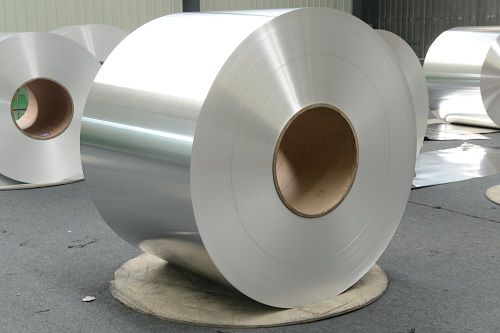Hot rolled aluminum coil and cold rolled aluminum coil are two different aluminum coil products in the aluminum processing process. There are some significant differences in their production process, performance and application.

1. Production process
- Hot rolled aluminum coil:
Hot rolling is a rolling process above the recrystallization temperature. Usually, larger aluminum ingots (such as 400-500mm thick) are used as raw materials and rolled through hot rolling mills at high temperatures.
Hot rolled billets are formed into billets through vertical casting, and then heated and rolled into coils for cold rolling process.
- Cold rolled aluminum coil:
Cold rolling is rolling below the recrystallization temperature. Usually, hot rolled aluminum coils are used as raw materials. After pickling to remove the oxide scale, cold rolling is performed. The finished product is usually a hard rolled coil.
Cold rolled billets are obtained by cast-rolled coils - continuous casting and rolling. They are usually thinner (such as 8mm), and then further thinned to the required specifications by cold rolling mills.
2. Performance characteristics
- Hot rolled aluminum coil:
Good surface quality, strong mechanical properties and ductility, suitable for applications such as stamping and stretching that require large deformation.
The oxidation effect is good, so it performs well in some applications that require surface treatment.
Since the internal structure of the material is more uniform during the hot rolling process, its mechanical properties are relatively good.
- Cold rolled aluminum coil:
It has higher surface quality and dimensional accuracy, and has excellent bending and tensile properties.
During the cold rolling process, the material will undergo cold work hardening, resulting in increased strength and hardness, but at the same time, plasticity and toughness will decrease.
Cold-rolled products are usually used to make products that do not require bending or stretching, or those that require high precision and good surface finish.
3. Application range
- Hot-rolled aluminum coil:
It is mainly used in the production of steel structures, bridges, ships, vehicles, and the manufacture of various mechanical parts.
It is also widely used in industries such as construction, transportation, electronics, and machinery manufacturing, especially for occasions that need to withstand greater stress and deformation.
- Cold rolled aluminum coil:
It is mostly used in home appliances such as automobiles, refrigerators, and washing machines, as well as industrial equipment, various building materials, and other application scenarios that require higher precision and surface quality.
It occupies an important position in the fields of mold manufacturing, precision instruments, and instrument manufacturing.
The choice of hot-rolled aluminum coil or cold-rolled aluminum coil should be based on specific application scenarios, performance requirements, cost considerations and subsequent processing requirements. Hot-rolled aluminum coil is suitable for applications that need to withstand large stress and deformation, such as automobile manufacturing and building structures, due to its good ductility and high strength, and is suitable for further surface treatment. While cold-rolled aluminum coil is more suitable for electronic equipment housings, home appliance panels and other products with high requirements for dimensional accuracy and appearance due to its high precision and flat and smooth surface quality.